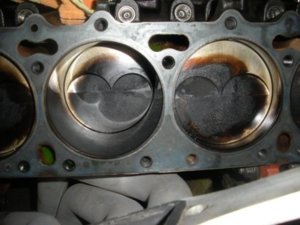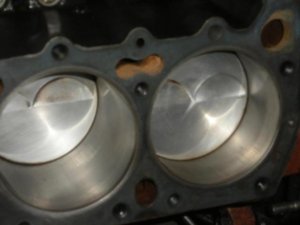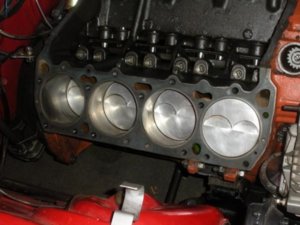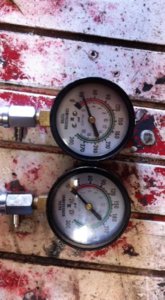- Local time
- 1:36 AM
- Joined
- Apr 13, 2012
- Messages
- 41,458
- Reaction score
- 150,547
- Location
- Granite Bay CA
It was a strange thing. Common sense would have told me that the compression ratio was not to blame. I tried different distributors, ECUs, different timing settings, springs in the distributor and even 100, 104 and 110 octane fuel. Only the 110 completely eliminated the knock. I pulled the heads and found zero evidence of detonation. I was told and I read that detonation leaves sharp impressions in the pistons as if they were poked repeatedly by an ice pick. All my pistons looked fine. no marks but just discoloration from some oil burning due to a poor fitting intake manifold.Kern Dog, wow; you had 10 years of frustration from 2005-15. What was the solution, hi octane fuel or?
Finally, lowering the compression was the fix. I could have pulled the engine and swapped in dished pistons but instead, I had the heads off to be ported and used a .075 head gasket to drop the CR to 10.07 to 1. No problems since.




















